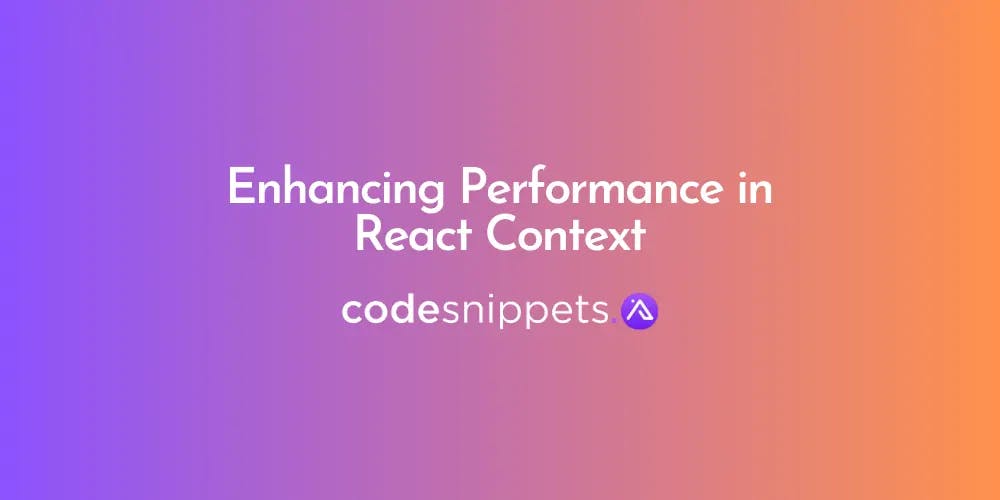LatestEnhancing Performance in React Context
React context serves as a resource for components to interchange data without passing props down each layer of the component tree.

What even is React Context?
React context serves as a resource for components to interchange data without passing props down each layer of the component tree. This feature is mainly utilized to circumvent the process of prop drilling.
To elucidate, look at the example below where prop-drilling is used to transfer the data from a parent component (ComponentA) through its children components (ComponentB and ComponentC) until it arrives at its final destination (ComponentD).
// Component A
function ComponentA(props) {
return <ComponentB data={props.data} />;
}
// Component B
function ComponentB(props) {
return <ComponentC data={props.data} />;
}
// Component C
function ComponentC(props) {
return <ComponentD data={props.data} />;
}
// Component D
function ComponentD(props) {
return <div>{props.data}</div>;
}
This process, though effective, results in unnecessary code and, as the application grows, can create confusion in deciphering the data flow. To combat this, state management libraries like Redux and MobX emerged, simplifying data sharing and management in an application. But, these solutions were typically too complex for most applications.
That's where React Context gained popularity.
It allows an easier process of providing data at a higher level in the component tree and consuming it at a lower level. So, with React context, our previous example can be restructured as follows:
// Create the context object
const MyContext = React.createContext();
// Provide the context data
function App() {
return (
<MyContext.Provider value="Hello World">
<ComponentA />
</MyContext.Provider>
);
}
// Consume the context data
function ComponentD() {
const contextValue = React.useContext(MyContext);
return (
<MyContext.Consumer>
<div>{contextValue}</div>
</MyContext.Consumer>
);
}
Decoding React Context Performance Barriers? Several aspects can lead to performance hiccups with React context, but we'll focus on the top two:
1.Deep component nesting: The more nested a component is, the more context providers it goes through, leading to unnecessary re-renders as the component may not need to use the context value from all providers.
2.Unnecessary re-renders: Changes to the context value prompts a re-render in all components within that context. If this value isn't utilised in a specific component or affects the component's function, it leads to unneeded re-renders.
These hurdles may not be substantial in small projects but can snowball into major issues in larger applications.
Ways to Augment React Context Performance Here are a few tips to avoid unnecessary performance issues with the React Context:
1.Avoid excessive component nesting: The deeper a component is nested, the more context providers it will have to pass through, which can cause unnecessary re-renders. Therefore, it's advised not to place all React context providers at the top level of your app, instead encapsulate only the components needing them to keep your context component tree as shallow as possible.
2.Steer clear of setting your React context provider value as non-stable value, which include object identities. They may cause unanticipated re-renders, denting the performance. For instance:
// object
<MyContext.Provider value={{ foo: 'bar' }}>
<ComponentA />
</MyContext.Provider>
// array
<MyContext.Provider value={[ ...foo, ...bar ]}>
<ComponentA />
</MyContext.Provider>
// function
<MyContext.Provider value={() => toggle()}>
<ComponentA />
</MyContext.Provider>
Following these steps will help in retaining your application's performance while using React Context.
Are you ready to start enhancing your performance in ReactJS?
Discover how Code Snippets AI can transform your development workflow for the better.






